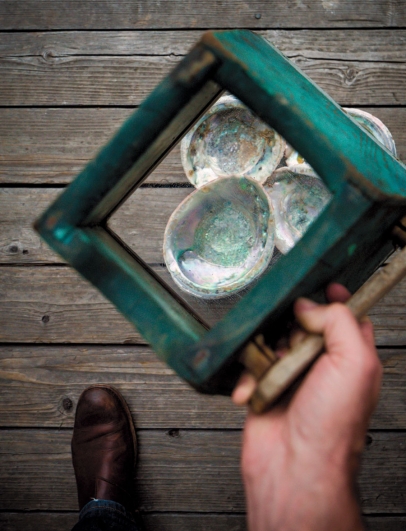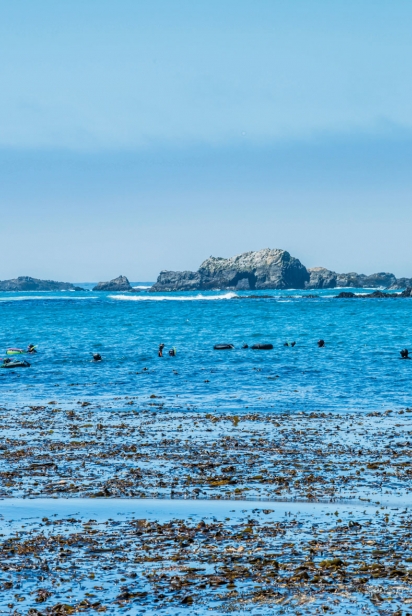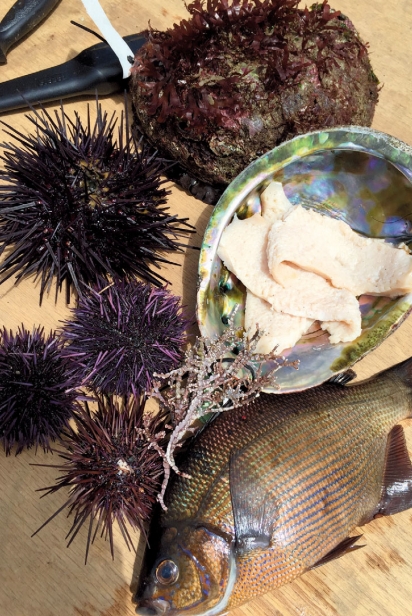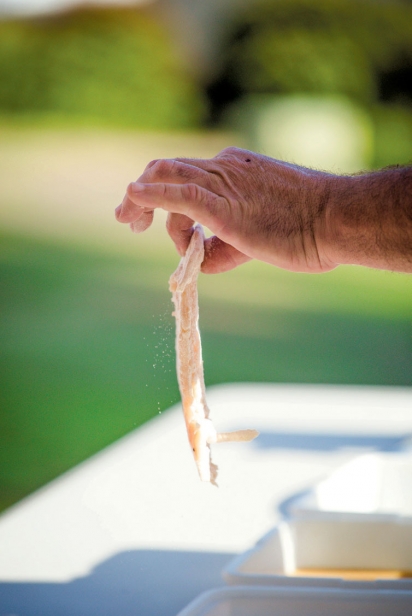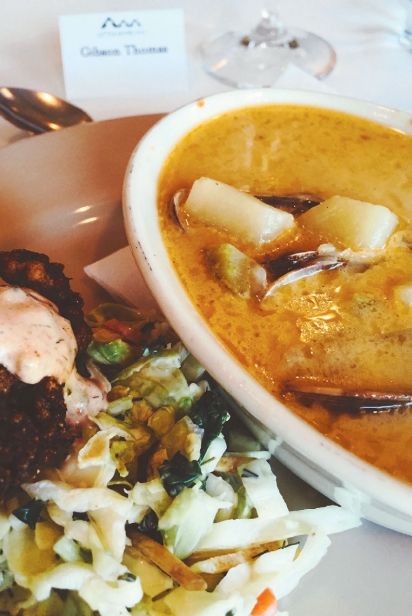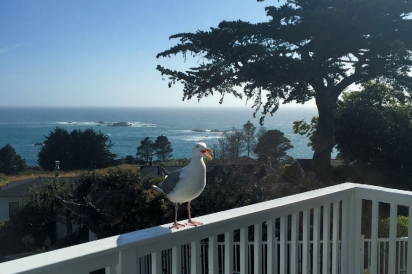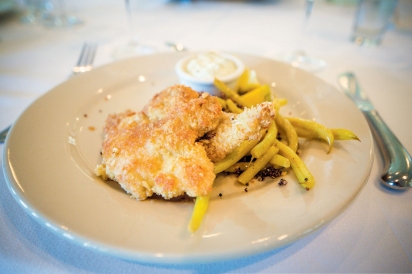Abalone Camp
My Journey in Pursuit of Norcal’s Holy Grail of Shellfish
I am famous in my family’s lore for having eaten three dozen oysters at one sitting, in second grade. My mother and I would drag my baby brother to one of the many converted gas stations that served the plump and briny bivalves harvested from neighboring Apalachicola Bay on the half shell, accompanied by nothing more than cocktail sauce and Saltines, on a regular basis during our early childhood. Luckily for him, my brother was happy to make a meal of crackers and sauce as long as they were washed down with an ice cold “shorty” bottle of Coca-Cola. Perhaps with a few peanuts bobbing at the top.
Growing up in the Panhandle of Florida, I spent long days in the Gulf of Mexico and the many bays that reach inland from the warm, clear, calm (except in hurricane season…) sea. Blue crabs and shrimp were abundant, and my grandfather’s lumber company crafted special glass-bottomed boxes we used to harvest bay scallops that grew in the grasses right in front of our beach house. For a brief shining moment I was the proud mama of several baby stingrays that had washed up on the beach. A guest at one of my parents’ cocktail parties made me put them back into the ocean—apparently my oversized Bama pickle jar was not an appropriate forever home. Still holding a grudge, I did not invite her to my first wedding 20 years later.
The honeymoon that followed that wedding inspired me to obtain my scuba certification, and I can still recall the thrill of the first grouper speared by our dive master and cooked up on the Belizean beach moments later. And the spicy ceviche made with the conch that I, myself, had “hunted.”
All to say that I consider myself fairly comfortable in the ocean, and I am definitely a lover of all things seafood. It was a given, then, that when I moved to Northern California almost 19 years ago I would add abalone to my list of “trophy” meals.
So why did it take me 19 years to check that one off my bucket list? For starters, the mighty Pacific is decidedly not the tranquil, clear and sometimes hot-as-bathwater Gulf of Mexico. I learned that when I arrived at Chrissy Field my first week in San Francisco, ready to earn my Bay Area stripes by learning to wind surf. Wait just a minute, wet suits required? Uh, no thanks.
A year or so later a boyfriend casually mentioned taking me abalone diving up the coast the next day. He had been before, but knowing what I know now, I shudder to think how that day might have gone down had the tides not been in my favor, aka too rough to dive. It never happened.
So when I got the call last spring inviting me to participate in the annual “Ab Camp” at Mendocino County’s Little River Inn, I jumped at the chance. I was finally going to add the iconic and delectable West Coast mollusk to my list of edible conquests. All equipment and guides provided. Poor defenseless abalone, stuck to rocks on the ocean floor. This was going to be like hunting the proverbial ducks in a pond, right?
My first clue that maybe I was in over my head was the episode of Shark Week that my 13-year-old son dialed up for us the night before I checked into camp. Turns out the infamous “red triangle” of Great White Shark attacks is centered exactly where I was headed, he gleefully pointed out. Who will make your school lunches if I am eaten?, I whimpered. But I was committed, so off I went.
The Little River Inn itself is magical, a collection of lovely vintage buildings and newer guest and meeting rooms, all perched over the Pacific. Cally Dym, fifth-generation owner of the inn, was there to meet our group on arrival. Cally grew up on the property, watching her grandparents and parents lead abalone hunts for guests, and she is clearly thrilled to carry on the special tradition. Her husband, Marc, is the Little River Inn’s executive chef, there to feed you extremely well in preparation for your expedition, and to show you how to cook your bounty when (and if) you bring it in. Don’t get carried away at the Little River Inn’s quaint and cozy bar, though. A hangover does not mix well with roiling seas early the next morning.
Cally has engaged top-notch free diving guides to lead her campers into the icy waters, and we spent the better part of the day before our actual ab hunt learning about abalone, the state of the local fishery, the astoundingly strict California Fish and Game Commission rules and regulations on abalone catch, our equipment, and what to expect in the water. With 25 years of scuba diving under my belt, I was still thinking this was going to be just another easy day in the water and bemoaning the three-a-day catch limit.
Then we walked down to Van Damme State Park, a beautiful crescent-shaped beach just across Highway 1 from the inn. Without a multiple-day fishing license, all I was going to be able to do that first day was field test my equipment and plan my strategy for the next day’s hunt.
Equipment failure reared its ugly head within moments. My fancy new closed fins, a Mother’s Day present, were too small to accommodate the 7mm thick neoprene booties I would need in the frigid water, a new requirement for this preferably bikini-only-clad diver. Undaunted, I decided to press on bootie-less. The dive shop experts doused the inside of my thick frogwoman suit with hair conditioner (ominously using a re-purposed herbicide sprayer emblazoned with the Monsanto label) to make it easier to slip on, and then helped me wrestle into the purposefully skintight sausage wrapper. No water was seeping into that baby!
Fully insulated, including a full hood and gloves, I followed my guide, a member of the USA National Spear Fishing team and free diving champion, down to the water and waded in. Another guide had gone out ahead, identified several legal-size abalone (that is a strict seven inches or greater across the shell) clinging to the rocks below and marked the spot with a line and a float. At this point, in my mind I was still thinking, “This is going to be like taking candy from a baby.”
As we laboriously swam out through the thick kelp beds towards the float, my heavy weight belt continuously snagging in the underwater forest, the guide reminded us again of the proper “duck dive” technique of hovering above your target, steadying your breath and then diving straight down to the abalone, clearing your nose at least once on the way down. Reaching the float, I dutifully got myself into position, peered down 20 feet to the marked spot and saw exactly NO abalone. Unlike ducks on a pond and candy in a baby’s hand, abalones’ coloring and shell texture are perfectly designed by nature to blend in to their rocky perch. And no one had mentioned that they would likely be hiding in crevices between and under ledges. Once my eyes grew accustomed to what I was supposed to look for, however, I was astounded by the number of abalone we saw even at that heavily fished beach. The opening shot of the war had finally been fired, but now the battle was on. I had to go get them.
Scuba equipment has never been allowed for abalone hunting north of the Golden Gate Bridge, so this meant diving down around 20 feet in the murky, icy water, keeping my eyes on the prize, measuring the shell with the gauge every ab diver is required to carry with him or her, popping that creature composed of solid muscle off the rock with my foot-long ab iron, then swimming back up to the surface, all while holding my breath. Ha! Not a chance.
I spent most of that night lying awake in the inn’s exceptionally comfy bed, fretting about how wimpy I was going to look to my fellow campers, many of them fellow journalists, when I came up empty the next day. A couple of them had had the foresight to purchase a multiple-day fishing license and had bagged their limit on our practice day, so I knew it could be done. I just didn’t think I could do it. How was I going to face my son! Not to mention write this story…
The following morning dawned much clearer and brighter than the previous day, the sun sparkling off the sea kayaks of the oft-disparaged “rock pickers,” the abalone hunters who choose to harvest the abalone clinging to the rock formations farther out in the cove that are exposed at low tide. Those lowly foragers were looking a LOT smarter to me by the minute.
But there was no turning back. My one smart move was to specifically request (well, plead) to go out with Josh Russo, a big burly man who had mentioned the day before that he specialized in newbies. A mechanical drafting engineer by vocation, Josh started guiding other ab divers in his “time off” out of love for the sport, and now serves as a member of the Watermen’s Alliance, a spear fishermen’s advocacy group. He also holds the primary recreational maritime activities seat on the Greater Farallons National Marine Sanctuary Advisory Council and is a member of the board of directors for the Sonoma County Abalone Network.
Repeating the process of getting slimed up and squeezing into our thick wetsuits, this time with fins that would accommodate booties, we slogged down to and into the water—blessedly quite a bit less turbid than the previous day. Josh’s easy, reassuring bedside manner had my partner bagging his first abalone within moments. And he’s the one who has never been able to scuba dive due to problems clearing his ears. I simply had to do it.
Countless times the sleepless night before I had repeated to myself the steps the guides had laid out for an effective dive, and maybe that was the secret of my success. Time enough to fully process it in my brain so that my cold-numbed body could follow suit. Encouragement from Josh and my partner also played a huge part. But they could not do it for me—the rules say you have to catch your own. After two or three aborted trips to “visit” my ab, I was able to wedge the iron into the correct spot between its flesh and the rock and lever that hirsute beauty off and into my other hand before shooting to the surface. More relieved than elated, I managed to bag two more over the next half hour, by now very thankful for the three-a-day limit.
We returned to the beach, where the guides and staff helped us immediately tag our abalone, following the stringent regulations against comingling until each ab has been identified with its hunter, then headed back to the inn where Cally was waiting to show us how to clean and prepare the flesh for that night’s communal feast. Think pounding. Lots of it.
And what a feast it was. Chef Marc and his kitchen staff prepared our abalone three ways: delicious fritters using the oft-discarded tough outer skin; creamy chowder; and rich and satisfying abalone “steak.” It was wonderful to come to the table with our fellow ab divers, happy campers all.
I can tell you that, as is the case with most food, if you harvest it yourself, whether from your own garden or from the wild, or even just have a hand in preparing it, the appreciation is exponential. Honestly, abalone would not make the list of my top 20 favorite foods (I refer you back to the opening paragraph for my Number 1, with Chiles en Nogada a close second), but when you fully understand how difficult they are to harvest, nothing tastes finer when you’re the one who’s “brought home the bacon.” And that’s the whole point, right?
For the Little River Inn’s instructions on how to clean and prepare abalone, and their recipe for classic breaded abalone steak, visit EdibleMarinandWineCountry.EdibleCommunities.com/Recipes.
Abalone regulations: Late last year, citing poor environmental conditions affecting the Northern California red abalone fishery, the California Fish and Game Commission reduced the annual limit on abalone to 12 (down from 18, which was a reduction imposed in 2014 from the prior limit, which had been 24) per diver. The three-a-day limit remains in place. The season was also shortened by two months, such that abalone can only be harvested during the months of May and June, then again August 1 through October 31. No commercial fishing of abalone is allowed at any time. For a complete list of rules and regulations, visit www.wildlife.ca.gov/Fishing/Ocean/Regulations/Fishing-Map/San-Francisco.


